APC 2013 Annual Report Download - page 219
Download and view the complete annual report
Please find page 219 of the 2013 APC annual report below. You can navigate through the pages in the report by either clicking on the pages listed below, or by using the keyword search tool below to find specific information within the annual report.-
 1
1 -
 2
2 -
 3
3 -
 4
4 -
 5
5 -
 6
6 -
 7
7 -
 8
8 -
 9
9 -
 10
10 -
 11
11 -
 12
12 -
 13
13 -
 14
14 -
 15
15 -
 16
16 -
 17
17 -
 18
18 -
 19
19 -
 20
20 -
 21
21 -
 22
22 -
 23
23 -
 24
24 -
 25
25 -
 26
26 -
 27
27 -
 28
28 -
 29
29 -
 30
30 -
 31
31 -
 32
32 -
 33
33 -
 34
34 -
 35
35 -
 36
36 -
 37
37 -
 38
38 -
 39
39 -
 40
40 -
 41
41 -
 42
42 -
 43
43 -
 44
44 -
 45
45 -
 46
46 -
 47
47 -
 48
48 -
 49
49 -
 50
50 -
 51
51 -
 52
52 -
 53
53 -
 54
54 -
 55
55 -
 56
56 -
 57
57 -
 58
58 -
 59
59 -
 60
60 -
 61
61 -
 62
62 -
 63
63 -
 64
64 -
 65
65 -
 66
66 -
 67
67 -
 68
68 -
 69
69 -
 70
70 -
 71
71 -
 72
72 -
 73
73 -
 74
74 -
 75
75 -
 76
76 -
 77
77 -
 78
78 -
 79
79 -
 80
80 -
 81
81 -
 82
82 -
 83
83 -
 84
84 -
 85
85 -
 86
86 -
 87
87 -
 88
88 -
 89
89 -
 90
90 -
 91
91 -
 92
92 -
 93
93 -
 94
94 -
 95
95 -
 96
96 -
 97
97 -
 98
98 -
 99
99 -
 100
100 -
 101
101 -
 102
102 -
 103
103 -
 104
104 -
 105
105 -
 106
106 -
 107
107 -
 108
108 -
 109
109 -
 110
110 -
 111
111 -
 112
112 -
 113
113 -
 114
114 -
 115
115 -
 116
116 -
 117
117 -
 118
118 -
 119
119 -
 120
120 -
 121
121 -
 122
122 -
 123
123 -
 124
124 -
 125
125 -
 126
126 -
 127
127 -
 128
128 -
 129
129 -
 130
130 -
 131
131 -
 132
132 -
 133
133 -
 134
134 -
 135
135 -
 136
136 -
 137
137 -
 138
138 -
 139
139 -
 140
140 -
 141
141 -
 142
142 -
 143
143 -
 144
144 -
 145
145 -
 146
146 -
 147
147 -
 148
148 -
 149
149 -
 150
150 -
 151
151 -
 152
152 -
 153
153 -
 154
154 -
 155
155 -
 156
156 -
 157
157 -
 158
158 -
 159
159 -
 160
160 -
 161
161 -
 162
162 -
 163
163 -
 164
164 -
 165
165 -
 166
166 -
 167
167 -
 168
168 -
 169
169 -
 170
170 -
 171
171 -
 172
172 -
 173
173 -
 174
174 -
 175
175 -
 176
176 -
 177
177 -
 178
178 -
 179
179 -
 180
180 -
 181
181 -
 182
182 -
 183
183 -
 184
184 -
 185
185 -
 186
186 -
 187
187 -
 188
188 -
 189
189 -
 190
190 -
 191
191 -
 192
192 -
 193
193 -
 194
194 -
 195
195 -
 196
196 -
 197
197 -
 198
198 -
 199
199 -
 200
200 -
 201
201 -
 202
202 -
 203
203 -
 204
204 -
 205
205 -
 206
206 -
 207
207 -
 208
208 -
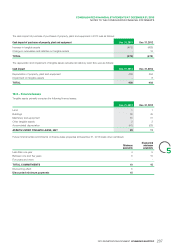 209
209 -
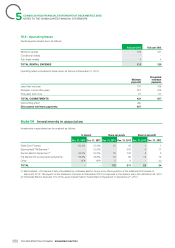 210
210 -
 211
211 -
 212
212 -
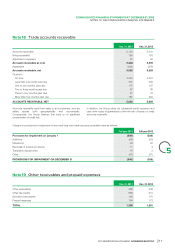 213
213 -
 214
214 -
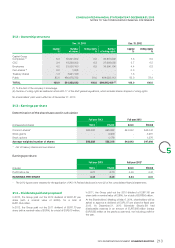 215
215 -
 216
216 -
 217
217 -
 218
218 -
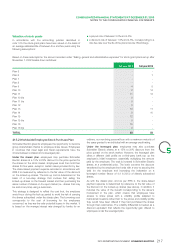 219
219 -
 220
220 -
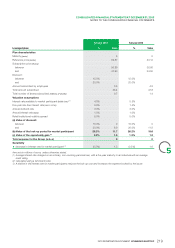 221
221 -
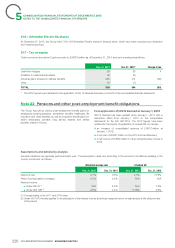 222
222 -
 223
223 -
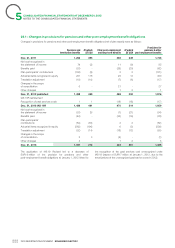 224
224 -
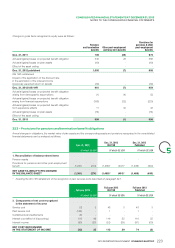 225
225 -
 226
226 -
 227
227 -
 228
228 -
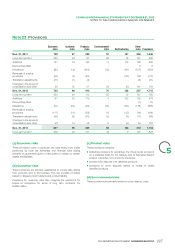 229
229 -
 230
230 -
 231
231 -
 232
232 -
 233
233 -
 234
234 -
 235
235 -
 236
236 -
 237
237 -
 238
238 -
 239
239 -
 240
240 -
 241
241 -
 242
242 -
 243
243 -
 244
244 -
 245
245 -
 246
246 -
 247
247 -
 248
248 -
 249
249 -
 250
250 -
 251
251 -
 252
252 -
 253
253 -
 254
254 -
 255
255 -
 256
256 -
 257
257 -
 258
258 -
 259
259 -
 260
260 -
 261
261 -
 262
262 -
 263
263 -
 264
264 -
 265
265 -
 266
266 -
 267
267 -
 268
268 -
 269
269 -
 270
270 -
 271
271 -
 272
272 -
 273
273 -
 274
274 -
 275
275 -
 276
276 -
 277
277 -
 278
278 -
 279
279 -
 280
280 -
 281
281 -
 282
282 -
 283
283 -
 284
284 -
 285
285 -
 286
286 -
 287
287 -
 288
288 -
 289
289 -
 290
290 -
 291
291 -
 292
292 -
 293
293 -
 294
294 -
 295
295 -
 296
296 -
 297
297 -
 298
298 -
 299
299 -
 300
300 -
 301
301 -
 302
302 -
 303
303 -
 304
304 -
 305
305 -
 306
306 -
 307
307 -
 308
308 -
 309
309 -
 310
310 -
 311
311 -
 312
312 -
 313
313 -
 314
314 -
 315
315 -
 316
316 -
 317
317 -
 318
318 -
 319
319 -
 320
320 -
 321
321 -
 322
322 -
 323
323 -
 324
324 -
 325
325 -
 326
326 -
 327
327 -
 328
328 -
 329
329 -
 330
330 -
 331
331 -
 332
332
 |
 |

CONSOLIDATED FINANCIALSTATEMENTS ATDECEMBER 31, 2013
NOTES TO THE CONSOLIDATED FINANCIAL STATEMENTS
Valuation of stock grants
a payout rate of between 3.0% and 4.5%;
l
a discount rate of between 1.6% and 4.5%, corresponding to a
l
In accordance with the accounting policies described in
risk-free rate over the life of the plans (source: Bloomberg).
note1.20, the stock grant plans have been valued on the basis of
an average estimated life of between four and five years using the
following assumptions:
Based on these assumptions, the amount recorded under “Selling, general and administrative expenses” for stock grant plans set up after
November7, 2002 breaks down as follows:
Full year 2013 Full year 2012
Plan 5 --
Plan 6 -1
Plan 7 --
Plan 8 --
Plan 9 45
Plan 10 214
Plan 11 11 12
Plan 10 bis 0-
Plan 11 bis 0-
Plan 12 0-
Plan 13 10 11
Plan 14 910
Plan 15 12 -
Plan 15 bis 0-
Plan 16 15 -
Plan 16 bis 0-
TOTAL 63 53
21.5.2 Worldwide Employee Stock Purchase Plan
ordinary, non-revolving personal loan with a maximum maturity of
five years granted to an individual with an average credit rating.
Schneider Electric gives its employees the opportunity to become
Under the leveraged plan, employees may also purchase
group shareholders thanks to employee share issues. Employees
5
Schneider Electric shares at a 15% to20% discount from the
in countries that meet legal and fiscal requirements have the
price quoted on the stock market. However, the leveraged plan
choice between a classic and a leveraged plan.
offers a different yield profile as a third-party bank top up the
Under the classic plan, employees may purchase Schneider employee’s initial investment, essentially multiplying the amount
Electric shares at a 15% to20% discount to the price quoted for paid by the employee. The total is invested in Schneider Electric
the shares on the stock market. Employees must then hold their shares at a preferential price. The bank converts the discount
shares for five years, except in certain cases provided for by law. transferred by the employee into funds with a view to securing the
The share-based payment expense recorded in accordance with yield for the employee and increasing the indexation on a
IFRS2 is measured by reference to the fair value of the discount leveraged number (factor of 4.4 in2013) of directly subscribed
on the locked-up shares. The lock-up cost is determined on the shares.
basis of a two-step strategy that involves first selling the
As with the classic plan, and as per IFRS 2, the share-based
locked-up shares on the forward market and then purchasing the
payment expense is determined by reference to the fair value of
same number of shares on the spot market (i.e., shares that may
the discount on the locked-up shares (see above). In addition, it
be sold at any time) using a bullet loan.
includes the value of the benefit corresponding to the issuer’s
This strategy is designed to reflect the cost that, the employee involvement in the plan, which means that employees have
would incur during the lock-up period to avoid the risk of carrying access to share prices with a volatility profile adapted to
the shares subscribed under the classic plan. The borrowing cost institutional investors rather than to the prices and volatility profile
corresponds to the cost of borrowing for the employees they would have been offered if they had purchased the shares
concerned, as they are the sole potential buyers in this market. It through their retail banks. The volatility differential is treated as a
is based on the average interest rate charged by banks for an discount equivalent that reflects the opportunity gain offered to
employees under the leveraged plan.
217
2013 REGISTRATION DOCUMENT SCHNEIDER ELECTRIC
